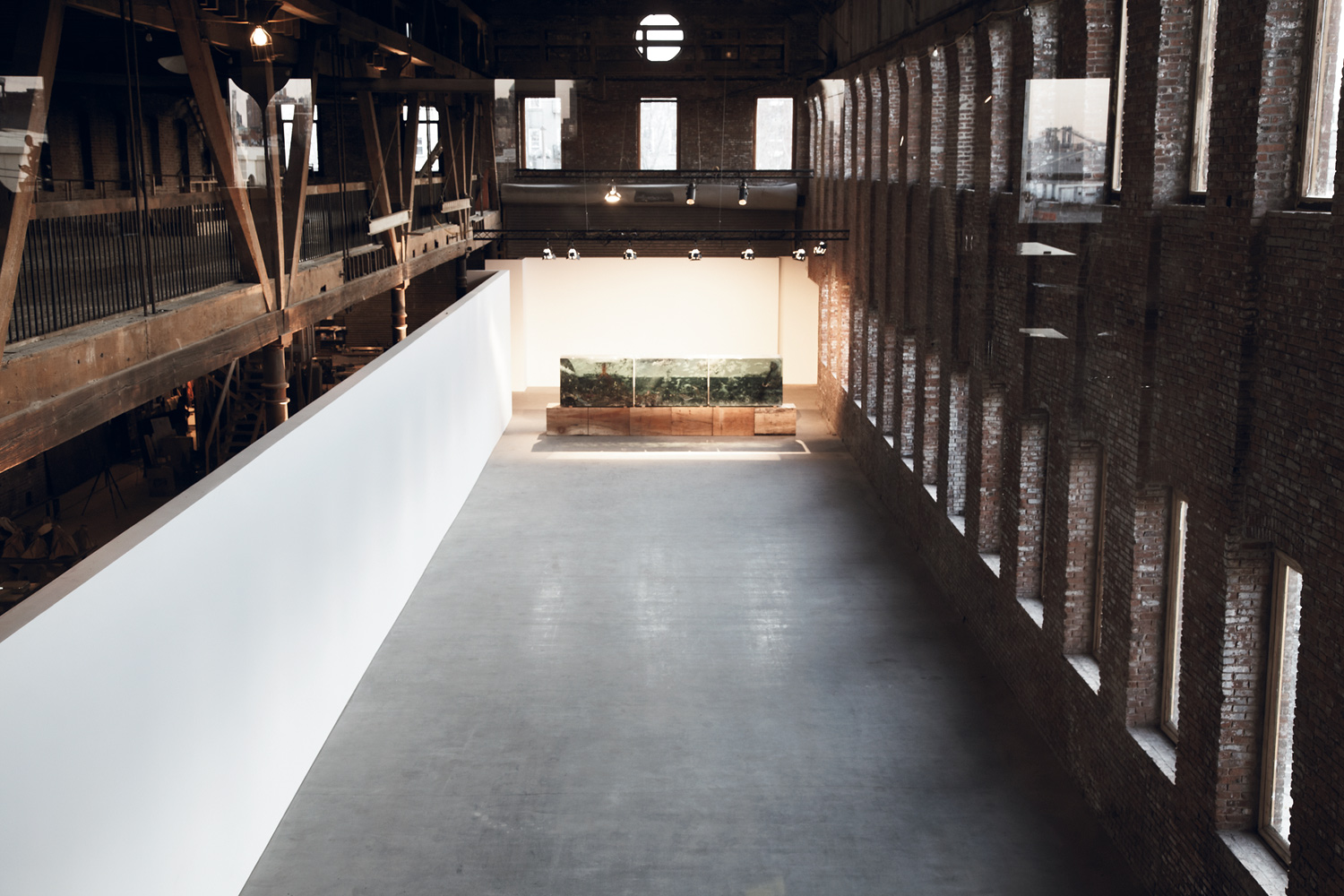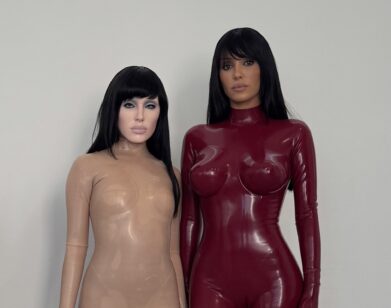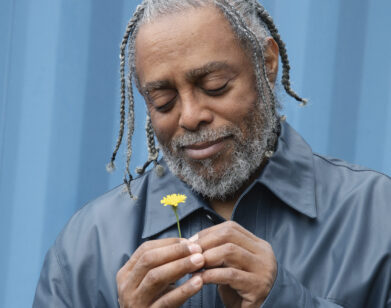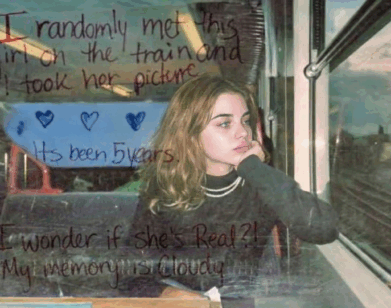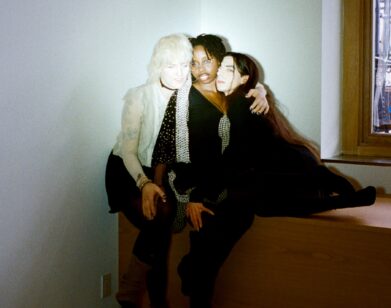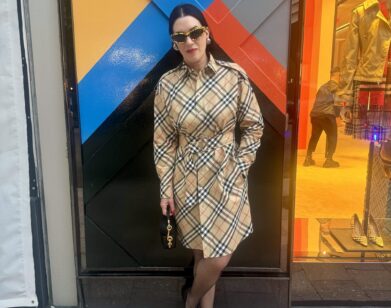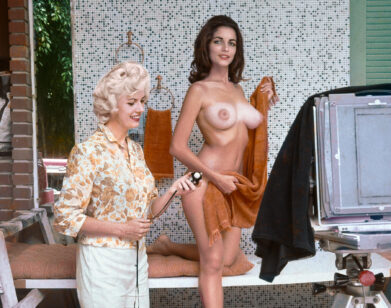Dustin Yellin
All artists dream of taking over a piece of the world and transforming it into a creative utopia. Sculptor Dustin Yellin, 36, is actually attempting to do it—in a 24,000-square-foot red-brick warehouse built in the mid-19th century in the bait-and-tackle neighborhood of Red Hook, Brooklyn. Yellin purchased the building a little under a year ago for $3.7 million, and has begun shaping his own private Gesamtkunstwerk within its walls. Part workshop, part exhibition space, part rainwater-collection commune, the multipurpose art hub is already drawing comparisons to the early pre-MoMA PS1, and, as it ramps up events this summer with parties, shows, and artist residencies, one imagines the verve here could eventually be comparable. Tentatively named Pioneer & King for the streets it lies between, the space may ultimately bear one of many different titles. Among those being considered is The Fitz—after Fitzcarraldo, Werner Herzog’s 1982 movie about the mad ambition of a single man who pushes a boat over a mountain.
While Yellin is a figurehead for the space, he does plan on utilizing the talents among his well-connected New York City art-world pool, with upcoming projects involving curator Vito Schnabel, artist Robert Woods, and former Interview editor Bob Colacello. Yellin, who just completed a year’s work on a 12-ton Hieronymus Boschian glass-encased tableau called The Triptych, recently invited us over to his urban art oasis.
CHRIS WALLACE: How did this all happen?
DUSTIN YELLIN: I got the building by miracle—with collectors and sort of patrons of mine helping—literally by the skin of my chinny chin chin, not even thinking that I would be able to renovate it right away. But I got lucky. I sold more art, and I got to do more work on the building. It’s kind of like a fantasy turned into a reality.
WALLACE: It’s every artist’s fantasy.
YELLIN: The foundation for the vision is to create a place a community can grow out of and exchange ideas—where disciplines can cross, where you can have painters and sculptors, but also filmmakers and musicians and scientists all under one roof.
WALLACE: And is there a unifying element-a house ethos?
YELLIN: That is the house ethos: to cross-pollinate all these different disciplines in one place. You go to a museum and it has this impact on your psyche. For this place, the idea is you can go to see a show or some art or go upstairs and see six or eight different artists working on different projects. You can go pick fruit from the organic garden and see installations. It really pulls from different ideas that exist already, whether those are Marfa or Dia or Black Mountain or Cooper Union or PS1—all these great places that have come before us.
WALLACE: So within the nonprofit, there will be a board that runs the place, chooses the artists in residence, programs the exhibitions?
YELLIN: We’re in the midst of putting that together. There’s an artists’ advisory committee with a group of artists that we’re starting to talk to and narrow down, which will help to advise.
WALLACE: And is that from your personal posse of artists, friends, curators, and critics?
YELLIN: Well, it extends outward. Part of it will be, and part of it is just artists we love and who are interested in the project. It’s kind of a mixture thereof.
WALLACE: Your magazine, in which artists interview other artists, is called Intercourse. The debut issue features Interview vet Bob Colacello. This place will likely be compared with The Factory. How much Warhol is in you?
YELLIN: Warhol was definitely an inspiration when I was younger. I wouldn’t quantify his sort of influence. I’ve been influenced by nature and science and I’ve been influenced by people like Ernst and Rauschenberg, Cornell and Bosch and Bruegel, by writers like Haruki Murakami to Pablo Neruda to Artaud. There’s so many of these people that we draw from that it’s hard to put a pin on any one.
WALLACE: Ten months ago this was a storage unit.
YELLIN: Exactly. I don’t even believe it. I feel like I’m on some crazy hallucinogens every day. It was originally built as Pioneer Iron Works in 1866, but the last 30 years or so, it was Time Moving and Storage.
WALLACE: How do you know when something is done—be it the triptych or this venture. How will you know when it is in perfect harmony?
YELLIN: I don’t think it ever is. I mean, even with the triptych, it’s finished, and it feels like sort of the most challenging work yet, but I’m already off to the next 10 works in my head that I haven’t even started. This place is similar in that I don’t know if I’ll ever feel like it’s finished. You feel that maybe in a moment in nature, in meditation, or in a certain moment during sex—where the objective, if you will, is clear. But I think part of the process of making things is that you are always just making things.
WALLACE: And dreaming bigger and bigger?
YELLIN: Yeah. Sometimes I have to be pulled down to reality. I want everything to happen all at once. We moved in here in the middle of fucking January. There were no windows on that top floor yet! The idea has been just to get it populated and have different people making art in here. I was ready to live in an Airstream down there. You know, Fitzcarraldo has been the overriding metaphor. I’ve felt just shameless with people, just like Klaus Kinski trying to get that boat up the river.
WALLACE: How close are you to what you pictured?
YELLIN: Oh, now we’re really close. All the wood is exposed, all the brick is exposed, we have a radiant floor down there. This will be populated by artists in six weeks. Upstairs, this incredible artist Joey Frank is making an installation. Vito [Schnabel] did a dinner for 150 in here. But now that spring is coming, everyone’s gonna start cooking in the garden. Artist David Brooks started shrink-wrapping in the garden, and now artists can really start to go nuts.
WALLACE: There’s that wonderful German word, Gesamtkunstwerk-the total work. Is this your grand opus?
YELLIN: It’s like that. For me, it’s a sculpture. The triptych is my main thing. That’s where my love is and that’s where my heart is—making works like that. This is another version—a living version—of that, but it feels like it’s all the same. It’s just like you’re working in layers you’re seeing through, whether it’s layers of glass or layers of people, and eventually all those layers are in harmony and in unison to sort of make something like this possible.
WALLACE: Are you good at delegating?
YELLIN: Absolutely. I have to be. I’m sitting here going, “Fuck, I wanna start my next triptych, and I wanna do this and that,” let alone find time for personal matters. Right now, it’s 20 hours a day, everyday. But I don’t really want to know about business; I don’t really want to know about fucking not-for-profits-those are great, but I wanna know about what I’m gonna put into this next work.
WALLACE: You never knew you’d know so much about zoning or engineering.
YELLIN: Or any of these things. It’s great to know it, but I find myself during meetings going, “What the fuck am I doing? I want to make art. I want to go read a good Baudelaire poem. I wanna go to fucking Paris and walk through Père Lachaise, you know, listening to a Townes Van Zandt song with somebody I love.” There’s that push and pull, but I feel like if I’m in the middle of, like, a thesis of sorts.
WALLACE: Yeah, it’s industrial-scale art at this point.
YELLIN: So I just go with it, and hope that the boat goes over the mountains.
Chris Wallace is a New York City-based Writer.

